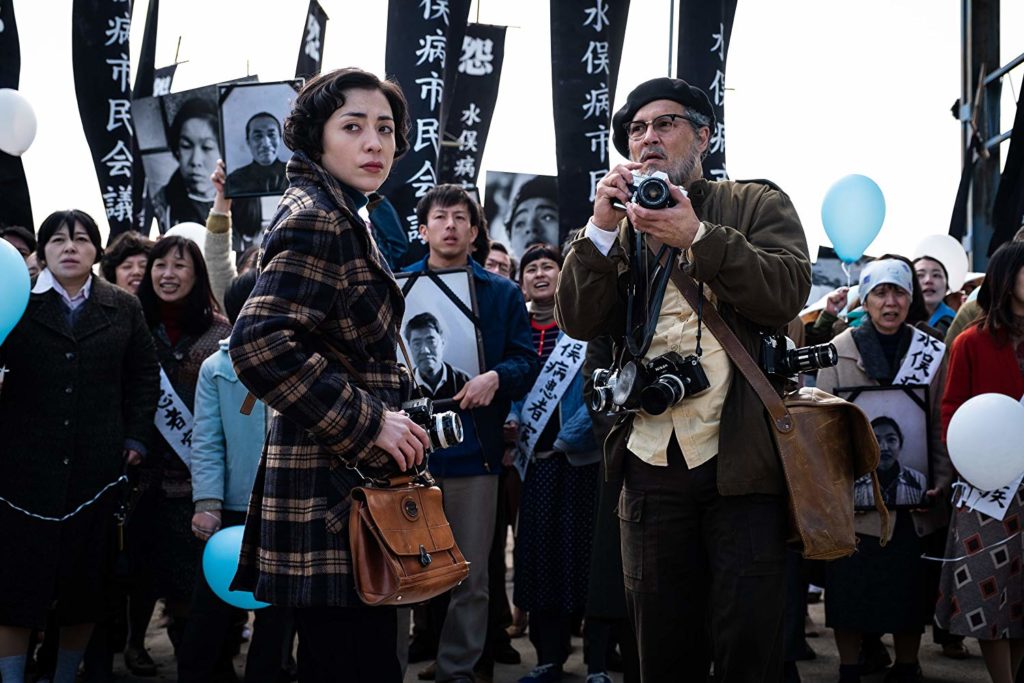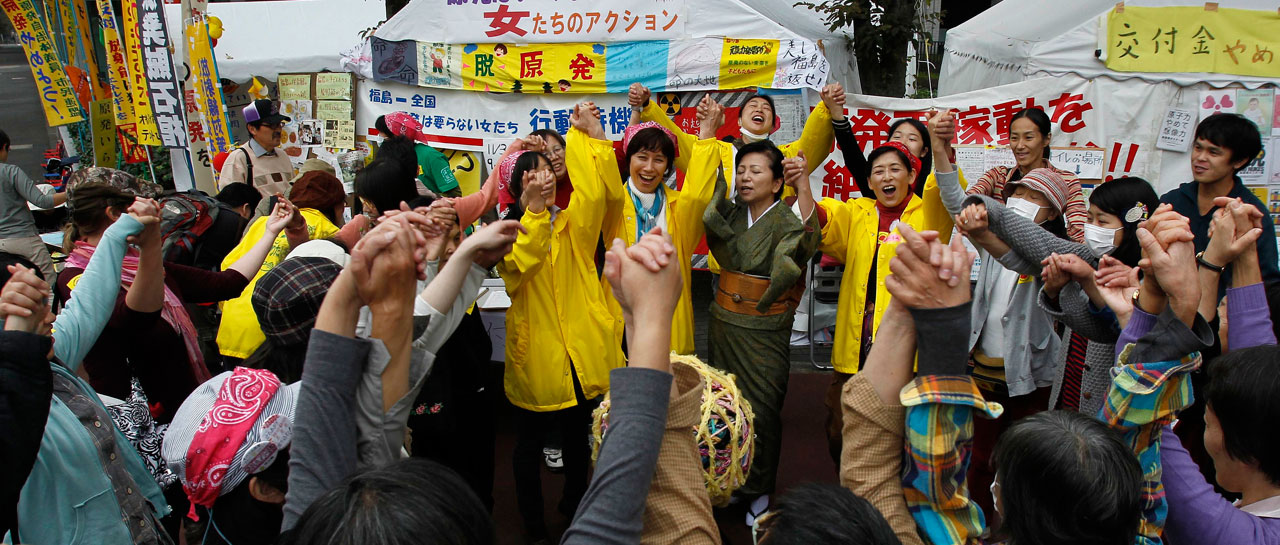Press Release / Briefing Paper
9 May 2014
Contact: Aileen Mioko Smith cell: +81-90-3620-9251 email: amsmith@gol.com
Will Japan Restart Nuclear Power Yet Again Ignoring Danger of Earthquakes?
Osaka High Court Hands Down Verdict on Ohi Injunction Lawsuit Case,
Reneges on Judicial Responsibility —Rules In Favor of Kansai Electric
Japan—The Osaka High Court handed down a verdict today at 14:00 in favor of the defendant, Kansai Electric, in an appeals case brought by 253 citizens seeking an injunction to stop restart of the Ohi Units 3 and 4 nuclear reactors located along Wakasa Bay in Fukui Prefecture and owned and operated by the utility. Plaintiffs were from the central Japan Kansai region, Fukui, Wakayama, and Gifu prefectures.
The case was fought under the new post-Fukushima nuclear regulatory standards issued on 8 July 2013 by the newly established Nuclear Regulation Authority (NRA).
The court, declaring the earlier Osaka District Court ruling (in favor of Kansai Electric, handed down 16 April, 2013) null and void, ruled that since the restart of Ohi Units 3 and 4 was not imminent, the case did not qualify as necessitating consideration of an injunction. It also stated that since the NRA was currently in the process of reviewing Kansai Electric’s application, the court would not rule on the issues addressed by plaintiffs. Many of these issues are common to all utility applications seeking restart.
Eight electric utilities have submitted a total of 17 applications for restart of reactors, i.e. the reactors are being examined to confirm whether or not they comply with the new post-Fukushima standards.
During the year-long high court case, Kansai Electric had not issued any rebuttal of the plaintiffs’ arguments. The court’s explanation of Kansai Electric’s position was given in just 9 lines. The court also did not go into the plaintiffs’ arguments. Its option consisted of 3 pages in the 11-page verdict text.
The plaintiffs’ arguments centered on the following:
Issue One:
Underestimation of Earthquake Shaking Effect on Ohi Units 3 and 4
Ohi Units 3 and 4 are sited in the Wakasa Bay region (Fukui Prefecture), which is riddled with earthquake faults. Emeritus Professor Katsuhiko Ishibashi, the seismologist who first coined the expression “Nuclear Accident Disaster by Earthquake” (“Genpatsu Shinsai”) has testified in Diet Upper House committee that next to the Hamaoka nuclear power plant located in Shizuoka Prefecture, the reactors most threatened by seismic activity are those along Wakasa Bay. Both Kansai Electric and the NRA under-estimate the scale of seismic motion that could occur in the event of a serious earthquake near the Ohi site.
The Ohi site is situated close to 3 earthquake faults (FoB, FoA and Kumagawa) that are aligned longitudinally. Citizens, and now the NRA, have stated these should be presumed to act as one fault.
Although Kansai Electric uses the Takemura Method (which is based on past Japanese earthquakes) to estimate the effects of a tsunami at the Ohi site, it uses another method based on past overseas earthquakes and just one earthquake which occurred in Japan, the Irikura-Miyake Method, when it comes to estimating seismic motion at the reactor site. Characteristics of Japanese and overseas earthquakes differ. Japanese earthquakes have been found to produce greater seismic motion with the same area (length and width) of fault movement than foreign earthquakes. The cause of this is not known.
If Kansai Electric utilized the Takemura Method to estimate seismic motion at Ohi Units 3 and 4 instead of the Irikura-Miyake Method, projected seismic motion affecting the reactors would be 4.7 times greater. Under such stress, the facility at Ohi would not be able to withstand the shaking that would occur. Since government regulations require a nuclear site to be able to withstand the most serious seismic motion estimated, the plants would have to be shut down if the Takemura Method were utilized.
Kansai Electric balked at assuming all three faults (FoB FoA and Kumagawa) would shift in unison. The Osaka District Court verdict, despite ruling in favor of Kansai Electric, had stated that estimation of seismic motion affecting the reactors should be undertaken under the assumption that the three faults would act in unison. This no doubt helped to support NRA Deputy Chief Commissioner Kunihiko Shimazaki, the authority’s seismic expert, who then continued to insist that the utility should make its estimates assuming movement of the three in unison. Shimazaki also stated that the earthquake should be presumed to shift at 3km depth rather than 4km. This would yield greater seismic motion. Ohi Units 3 and 4 now must undergo costly reconstruction and delay of restart before the reactors’ review is completed. Newspaper reports state it will be difficult to restart the reactors within this fiscal year, thus leading to the court’s statement that restart is not imminent.
While taking a stand on the 3-fault issue, the NRA is not requiring that Kansai Electric use the same Takemura Method it used for estimating tsunami height when it estimates seismic motion of the reactor site, although at one point the Nuclear Regulation Agency used Takemura Method figures when pointing out to Kansai Electric that it should employ several types of analyses, not just Irikura-Miyake. Later, the Agency withdrew the Takemura Method remark. Commissioner Shimazaki had stated earlier, when addressing the two different methods used for tsunami and seismic motion of the reactors, that “The earthquake is the same one.” Later, however, he made no further mention of this issue. The NRA often changes its stance after holding closed-door meetings with utility applicants. (All electric utilities use the same method of using one method for tsunami and the other for seismic motion affecting reactors.)
The plaintiffs demanded that in order to protect citizens, Kansai Electric must use the Takemura Method when estimating seismic motion of Ohi Units 3 and 4.
Issue Two:
A: Kansai Electric is Violating the Post-Fukushima Accident Regulation Requiring Measures to be Undertaken to Prevent a Breach of the Reactor Vessel—NRA is Also Ignoring its Own Regulation
The post-Fukushima regulations issued by the NRA require that, in the event of a serious accident, operators have a plan for preventing melt-through of the molten fuel through the reactor vessel. Kansai Electric’s application for restarting the Ohi units (and all PWR applications of other utilities), however, ignores this regulation. Instead, the reactor vessel is to be abandoned once the fuel begins to melt and instead, spraying and pooling of water at the bottom of the containment vessel is planned. This is in clear violation of the NRA regulation. The NRA should have not accepted the application in the first place. However, the NRA is currently processing all utility applications. In fact, Commissioner Toyoshi Fuketa, the NRA’s reactor expert, has described this type of application as “not having much of a problem.”
The plaintiffs are demanding that Kansai Electric meet the NRA regulation and have a plan to inject water into the reactor vessel in the event of a fuel melt, and undertake measures to retain radioactive material inside the containment vessel in the event of a reactor vessel breach.
B: Kansai Electric Measures and NRA Regulations Do Not Prevent Release of Radioactive Water into the Ocean in the Event of a Serious Accident
Kansai Electric’s method of preventing radioactive material from entering the ocean is a silt fence around the bay where the reactors are situated. This is the same ineffective method that is currently being employed by Tokyo Electric at Fukushima Daiichi. NRA regulations do not require measures to be undertaken to prevent release of radioactive material from entering the marine environment in the event of an accident.
The plaintiffs insist that lessons from the Fukushima accident should be learned and Kansai Electric must undertake measures to prevent release of radioactive material into the marine environment in the event of an accident.
Issue Three:
Active Fault at Ohi Unit 3 and 4 Site Being Ignored by Kansai Electric (and NRA)
The Ohi Unit 3 and 4 site is riddled with shattered zones (earthquake faults). As a result of citizen action and Diet member petitioning, one of the faults, the F-6, was investigated by the NRA. During the investigation, Kansai Electric refused to dig a 300-meter trench which the NRA had asked for in order to locate the fault, digging instead a trench only 70 meters long. There, at a different location than where the utility had said the F-6 was located, it found an inactive fault, and declared it to be the F-6. This was then called the New F-6 fault. By drawing a contorted fault line crossing the reactor site from the north to the south which bends sharply in the middle, it stated this was the New F-6 fault and it is inactive. The NRA agreed.
During the investigation, an active fault was found at the northern part of the reactor site at a location called Daibahama. The fault is located 210 meters from the emergency coolant pipe leading from the ocean to the reactor vessels. Although the peer review which followed the NRA investigation stated that the fault should be investigated to see whether it goes further into the reactor site and closer to the emergency coolant pipe, and the NRA agreed to investigate further, the NRA has failed to put this on its agenda and no such investigation has been undertaken.
The NRA chart listing issues that been completed under the review process for Ohi Units 3 and 4 registered the earthquake fault issue as having cleared the review. It is worth noting that the new post-Fukushima regulations issued by the NRA state that if an active fault is found near a vital facility at the reactor site, the site cannot be operated. The NRA is ignoring its own regulation.
The plaintiffs are seeking that the court should issue an injunction to prevent restart of Ohi Units 3 and 4 because the plant is unsafe from earthquakes.
———
“Both the Nuclear Regulation Authority (NRA) and the electric utilities including Kansai Electric are reneging on their responsibility to prevent another nuclear power plant disaster in Japan. It is unfortunate that the Japanese judiciary is following suit. We hope the judiciary will change course and realize it must think and act on its own,” stated Aileen Mioko Smith, executive director of Green Action (Japan).
Citizens (many of the same plaintiffs) are also suing the Japanese government in Osaka District Court. The lawsuit seeks to have the court declare that Ohi Units 3 and 4 should not be restarted.
In civil society action, citizens are addressing the inadequacy of Japanese nuclear accident emergency planning and are protesting the NRA’s declaration that the danger of volcanic eruption to the Sendai nuclear power plant site in Kagoshima Prefecture will be addressed only after completion of the restart application review. I is worthy to note that none of the NRA commissioners have expertise on volcanoes.
Download: Osaka High Court Hands Down Verdict on Ohi Injunction Lawsuit Case
Today’s Japanese press release issued by the plaintiffs can be found at:
http://www.greenaction-japan.org/modules/wordpress/index.php?p=698





